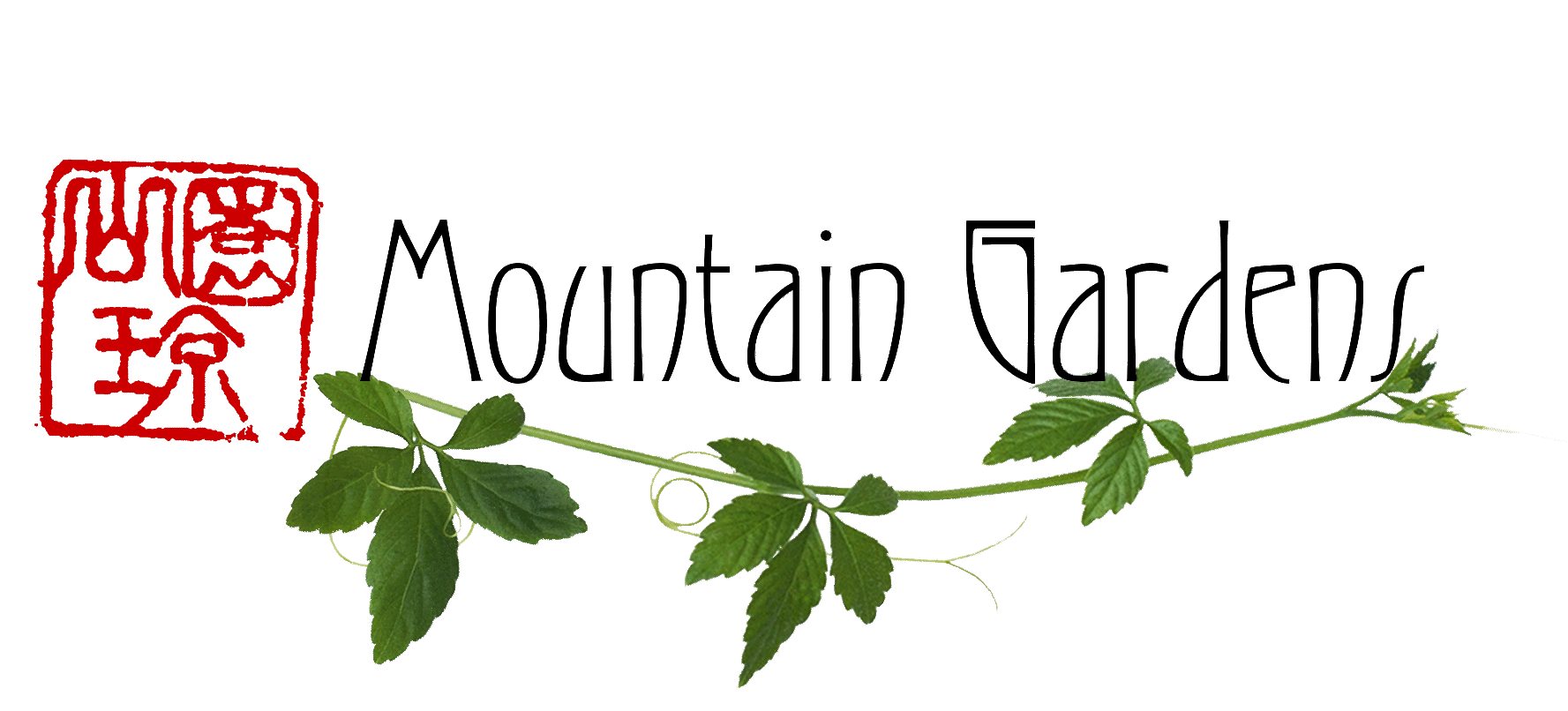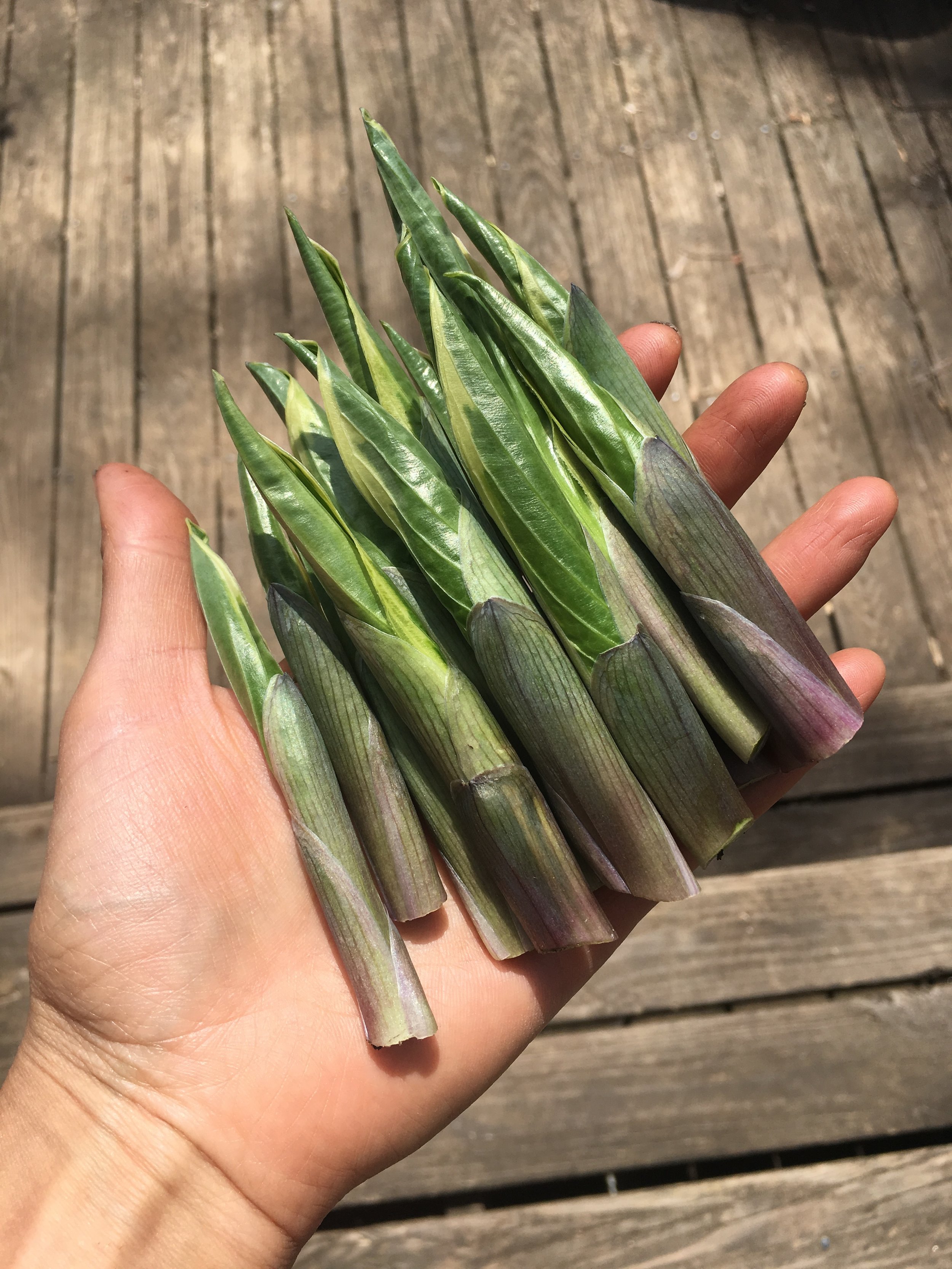Sansai Lunch
The color green is returning to Mountain Gardens: naked branches on the trees are leafing out, bringing life to the mountainside and announcing the arrival of spring. Below, plants that have lain dormant underground for months are sending up new, tender growth. This is the time for sansai (Japanese for "mountain vegetables")— the tender buds and shoots of wild plants, some of which are only edible at this time of year before they grow tough and unpalatable.
Here at Mountain Gardens, we grow many sansai plants (and have written about this topic extensively on our Sansai page).
Last weekend as we were walking around the gardens, we noticed ostrich fern fiddleheads and hosta shoots. It was almost time for lunch...
OSTRICH FERN FIDDLEHEADS
Matteuccia struthiopteris
A familiar wild food in North America, Matteuccia ferns also grow in Japan where they are a popular sansai vegetable. Often just called fiddleheads (a point of confusion for beginner foragers who might think all fern fiddleheads are edible— they aren't), ostrich ferns are a tasty wild edible if you gather the fiddleheads just before they unfurl. Here at Mountain Gardens, we aren't in their native range (which extends from Canada to Virginia, just north of us), but Joe planted them around the garden long ago and they've done quite well here. Samuel Thayer, our favorite wild foods writer, says you can pick fiddleheads as soon as they appear, but he recommends waiting until they're larger (12 to 28 inches), "as long as the stems are tender and the tops are still tightly curled," since most of the edible volume is in the stalk. As with any wild plant harvest, it's important to practice moderation and not overharvest–don't pick too many fronds from one rosette or harvest from the same plant multiple times in the season, as this may hurt the plant to the point where it can't recover.
As you can see, we didn't pick a lot of fiddleheads (many were already past the point of harvestability)— just enough to make a beautiful garnish for our duck eggs, which we'd gathered early that day from the duck yard. We fried them in butter and topped it all off with some ramp salt made by our friend Ryan.
Frying the fiddleheads and eggs with butter.
Fiddleheads on a duck egg from our duck yard, with ramp salt.
For the next course, we got fancier...
HOSTA SHOOTS
Hosta spp.
Hosta shoots emerging from the leaf litter—this is what they look like when they're ready for harvest.
Hosta shoots before cooking.
Hostas (yes, those ornamental plants growing in flower gardens everywhere) are actually woodland plants native to Japan and other parts of Asia, where they've been long been used as wild vegetables. While some species are more famous for their size and delectability, there seems to be some consensus that all hostas are edible, especially when you're cooking the shoots. Their tolerance for shade makes them a great perennial in forest gardens.
To harvest, we cut the shoots–those whose leaves had not begun to unfurl–off at ground level with a knife, careful to leave plenty of others in the clumps we harvested from.
Again, we fried them in butter with ramp salt, serving them with more duck eggs and some home made biscuits.
Hosta shoots frying
Hosta shoots, duck egg, and homemade biscuit, with ramp salt.
They tasted incredible and had a great texture– no surprise: it turns out they're in the Asparagus family.
References & Further Reading:
The Forager's Harvest by Samuel Thayer
How to Grow Perennial Vegetables by Martin Crawford
Steven Barstow's article on Hostas in Permaculture Magazine
An extensive list of Sansai plants, with pictures available at Shizuoka Gourmet






